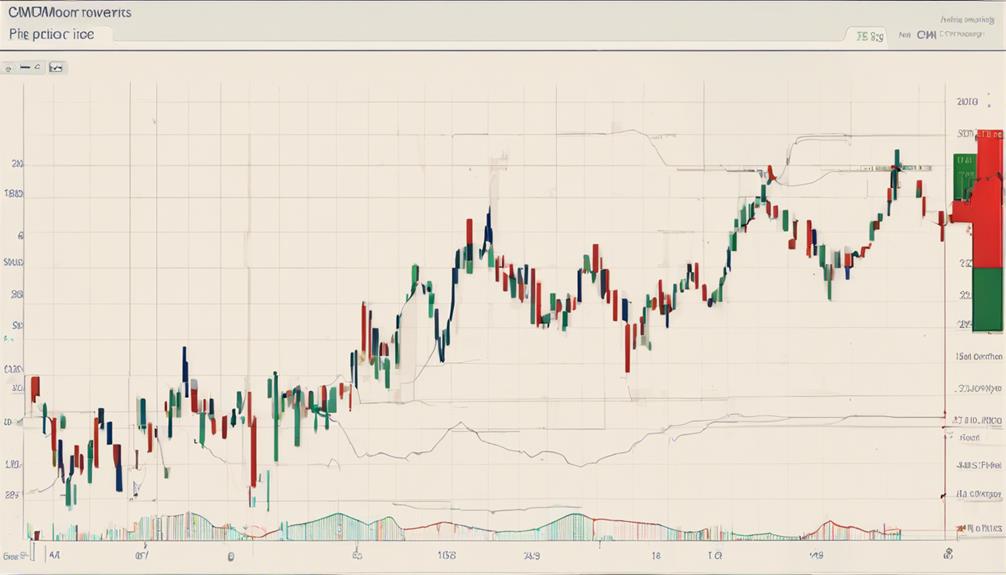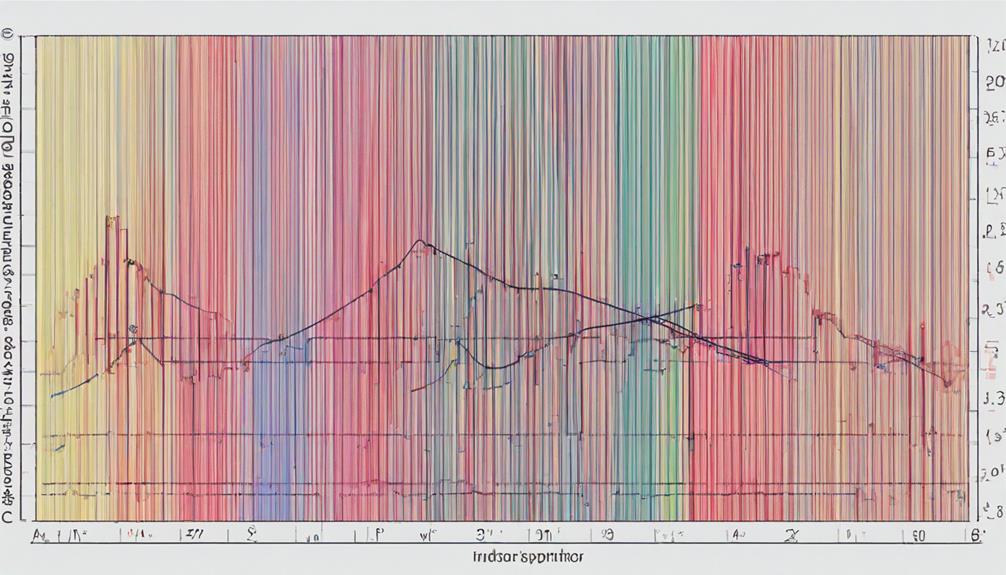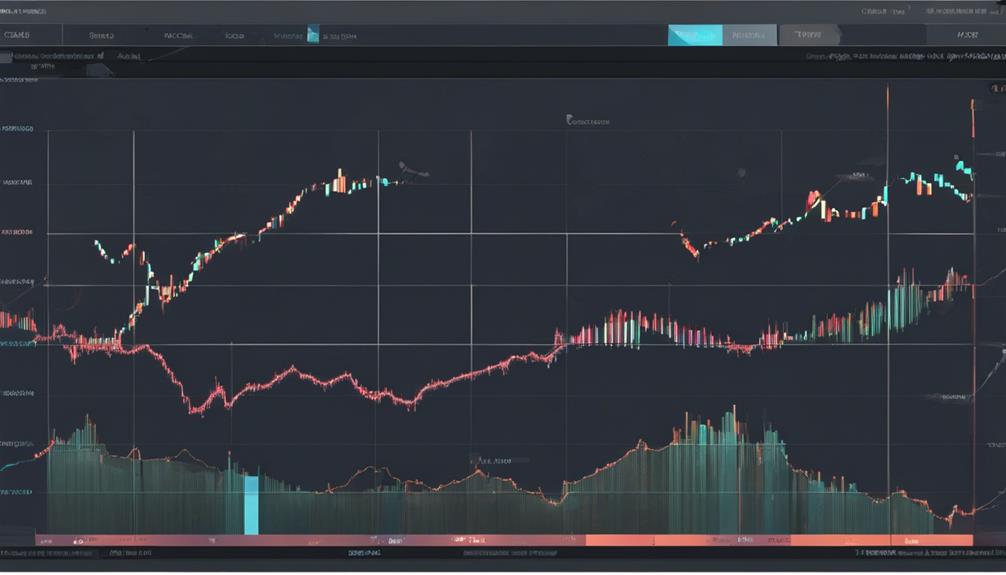In the realm of technical analysis, the decision to opt for the Chaikin Money Flow (CMF) indicator over the Moving Average Convergence Divergence (MACD) raises pertinent considerations for traders seeking an edge in the market.
While both tools have their merits, the distinct advantages CMF offers can significantly impact trading strategies.
By delving into the nuanced differences between CMF and MACD, traders can gain valuable insights into why CMF may be the preferred choice in certain market conditions.
Unique Advantages of CMF Over MACD
In comparing the CMF and MACD indicators, the unique advantages of CMF stand out prominently due to its focused analysis on money flow and distinct visual trend indicators.
Unlike MACD, which considers the difference between two moving averages, CMF specifically incorporates volume data to assess the strength of buying and selling pressure in the market.
The color-coded trend indicators provided by CMF, with red signaling a downtrend and green an uptrend, offer traders a clear visual representation of market direction that MACD lacks.
Additionally, CMF's ability to identify overbought or oversold conditions based on its readings provides valuable insights for traders seeking potential entry or exit points.
The inclusion of an accumulation/distribution line in CMF's calculation also offers a unique perspective on market strength compared to MACD's reliance on moving averages alone.
Effectiveness of CMF in Trading

Demonstrating its utility in market analysis, the effectiveness of CMF in trading is underscored by its ability to gauge buying and selling pressure through the calculation of weighted volume ratios. By analyzing the Chaikin Money Flow (CMF) indicator, traders can interpret the relationship between price movements and trading volume.
Positive CMF readings indicate strong buying pressure, signaling potential uptrends, while negative readings suggest selling pressure and potential downtrends. Moreover, CMF can offer insights into potential reversals when diverging from price trends, helping traders anticipate market shifts.
Additionally, high CMF values may indicate overbought conditions, while low values could suggest oversold conditions, assisting traders in identifying possible entry or exit points. To enhance the accuracy of trading decisions, traders often combine CMF with other technical indicators to confirm signals and improve overall outcomes in the financial markets.
Leveraging CMF for Improved Outcomes

Building on the insights gained from analyzing the effectiveness of CMF in trading, leveraging this indicator strategically can lead to improved outcomes in market analysis and decision-making. The Money Flow Index, as represented by CMF, offers a unique perspective by focusing on money flow dynamics, indicating the strength of buying and selling pressures within the market.
The color-coded trend indicators provided by CMF offer a clear visual representation of market direction, simplifying interpretation compared to MACD. Additionally, CMF's ability to identify overbought and oversold conditions more effectively than MACD can assist traders in making timely decisions.
By incorporating volume and price movements into its calculation, CMF provides a comprehensive view of market dynamics, enhancing the understanding of market trends. Traders seeking a direct assessment of money flow and its impact on price movements may find CMF to be a valuable tool for making more precise trading decisions.
Leveraging CMF in conjunction with other indicators like the Chaikin Oscillator can further enhance its effectiveness in predicting market movements.
Comparing CMF and MACD Indicators

Analyzing the contrasting features of CMF and MACD indicators reveals distinct methodologies in assessing market dynamics and trend signals.
- CMF vs. MACD Focus: CMF measures the flow of money into or out of a security using volume and price data, whereas MACD focuses on the relationship between two Weighted Moving Averages (EMAs).
- Visualization Differences: CMF provides color-coded trend indicators for market direction, while MACD uses a histogram to depict momentum shifts.
- Primary Usage: CMF is preferred for analyzing money flow dynamics and identifying buying or selling pressure, while MACD is commonly used for pinpointing trend changes and measuring momentum strength.
- Application in Trading Strategy: Understanding the distinct characteristics and applications of CMF and MACD can assist traders in selecting the most appropriate indicator for their specific trading strategies.
These differences underline the importance of comprehending the unique functionalities of each indicator to effectively interpret market movements and make informed trading decisions.
Reasons to Prioritize CMF Over MACD

Given its focus on money flow and volume, CMF emerges as a preferred indicator over MACD for traders seeking clearer insights into buying and selling pressure dynamics. CMF's emphasis on accumulation/distribution line and volume provides a more comprehensive understanding of market dynamics compared to MACD.
The color-coded trend indicators offered by CMF allow for quick and easy identification of market direction, setting it apart from the more complex MACD. Additionally, CMF's ability to detect overbought and oversold conditions through its unique calculation method offers traders a valuable tool for making informed decisions.
The distinctive calculation elements and signals at specific levels within CMF offer clear advantages over MACD in terms of confirming price movements and providing precise buy and sell signals. Overall, traders looking for a more focused, straightforward approach to analyzing market trends and making trading decisions may find CMF to be a superior choice over MACD.
How Does the Use of CMF Indicator Compare to MACD Indicators in Predicting Market Trends?
When comparing the use of CMF indicator for markets to MACD indicators in predicting market trends, traders find that the CMF indicator provides a clearer insight into the flow of money in and out of a stock. It focuses solely on volume and can aid in determining potential trend reversals.
Frequently Asked Questions
Is CMF a Good Indicator?
CMF is a valuable indicator for evaluating market dynamics, measuring money flow strength, and identifying buying/selling pressure in securities. Traders commonly use CMF to confirm price movements, spot potential reversals, and determine optimal entry/exit points in trading strategies.
What Is the CMF Strategy in Trading?
The CMF strategy in trading assesses money flow strength by analyzing volume and price data. It aids in recognizing market buying and selling pressure, offering insights into potential reversals via divergences and confirming price trends for strategic trading decisions.
What Is the Difference Between CMF and Obv?
CMF and OBV are both volume-based indicators in technical analysis. CMF measures money flow strength by combining price and volume, while OBV focuses solely on volume changes to track buying and selling pressure.
What Is the Difference Between Chaikin Money Flow Index and Money Flow Index?
The Chaikin Money Flow Index evaluates market direction through color indicators, while the Money Flow Index identifies overbought/oversold conditions with specific levels. Both indicators utilize volume and price movements but differ in signaling methods and signal interpretations.
Conclusion
In conclusion, the Chaikin Money Flow (CMF) indicator offers a unique perspective on market trends, providing traders with valuable insights for making informed decisions.
Choosing CMF over Moving Average Convergence Divergence (MACD) can lead to a clearer understanding of buying and selling pressure, ultimately leading to improved trading outcomes.
Just as a compass guides a ship through turbulent waters, CMF can serve as a reliable navigational tool for traders in the complex world of financial markets.
